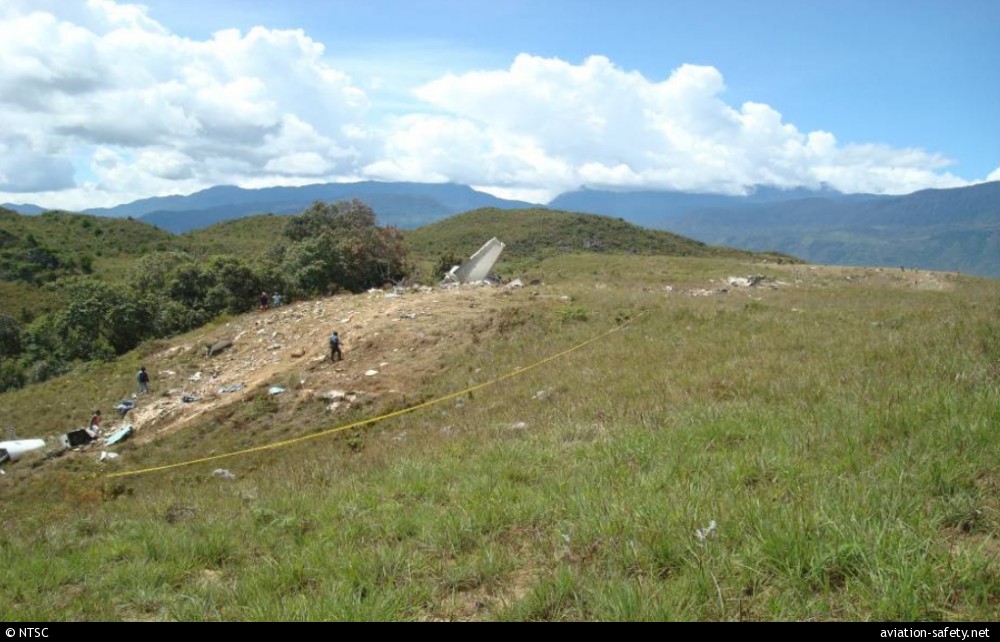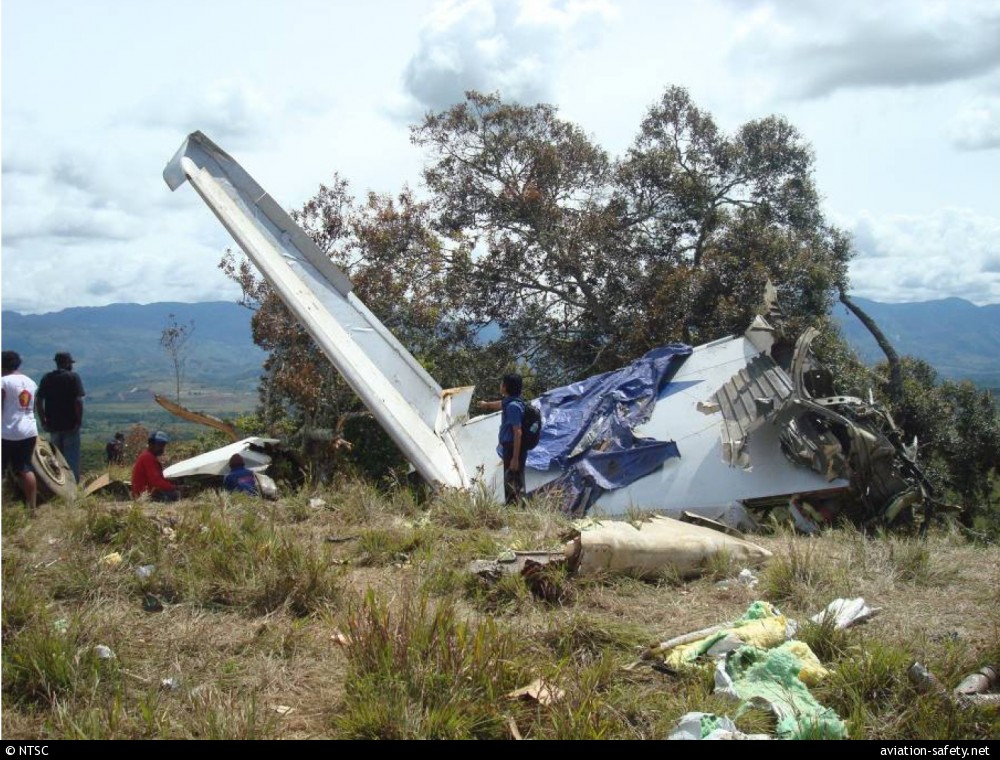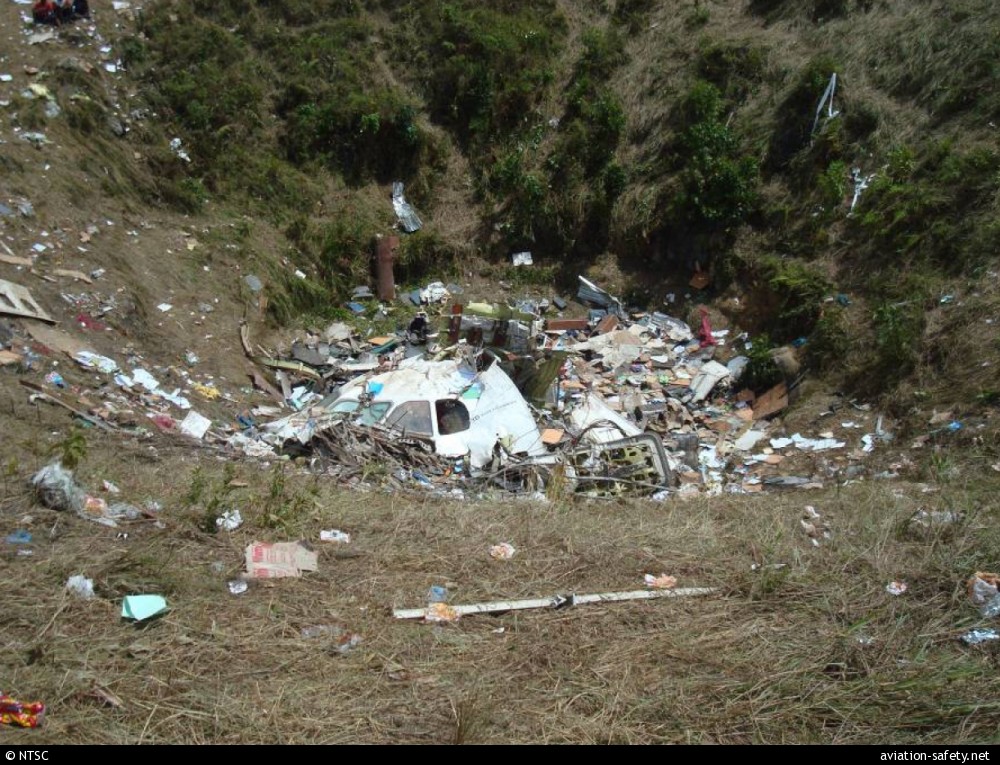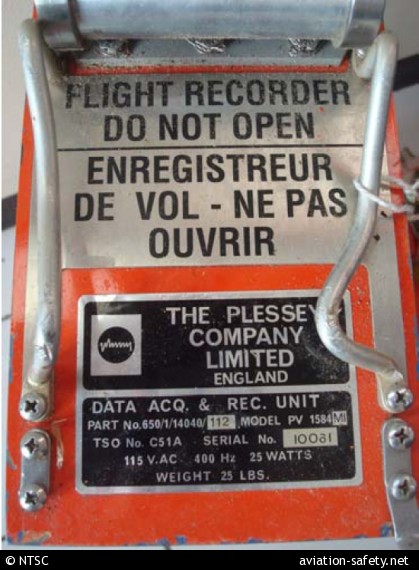
| Date: | Thursday 9 April 2009 |
| Time: | 07:43 |
| Type: |  British Aerospace BAe-146-300 |
| Owner/operator: | Aviastar Mandiri |
| Registration: | PK-BRD |
| MSN: | E3189 |
| Year of manufacture: | 1990 |
| Total airframe hrs: | 22225 hours |
| Engine model: | Lycoming ALF502R-5 |
| Fatalities: | Fatalities: 6 / Occupants: 6 |
| Aircraft damage: | Destroyed, written off |
| Category: | Accident |
| Location: | 6,5 km NW of Wamena (WMX) -
 Indonesia Indonesia
|
| Phase: | Approach |
| Nature: | Cargo |
| Departure airport: | Jayapura-Sentani Airport (DJJ/WAJJ) |
| Wamena Airport (WMX/WAJW) | |
| Investigating agency: | NTSC |
| Confidence Rating: |
A four-engine Bae-146-300, registered PK-BRD, was destroyed when it impacted a mountainside while on approach to Wamena (WMX), Indonesia. All six crew members were killed.
The flight departed Jayapura (DJJ) on an scheduled cargo/passenger flight to Wamena (WMX). The airplane carried staples such as rice and flour. The crew consisted of a captain, co-pilot, engineer, loadmaster and two flight attendants.
The aircraft was being operated under the instrument flight rules (IFR) for the sector from Sentani, and a visual descent, approach and landing at Wamena, because there was no published instrument approach procedure at Wamena.
There was low cloud with a base of 300 meters on the final approach track to runway 15 at Wamena.
The aircraft tracked parallel to, and to the right of the extended runway 15 centreline. During that approach, and while descending through 6,234 feet (790 feet by radio altimeter), the EGPWS voice aural alert 'TERRAIN TERRAIN' sounded.
When the aircraft was passing 6,200 feet (991 feet by radio altimeter) on descent, the EGPWS voice aural alert 'WHOOP WHOOP, PULL UP' sounded. The aircraft started turning left toward runway as it was passing 5,719 feet (540 feet radio altimeter) on descent. As the aircraft passed 5,693 feet (516 feet radio altimeter) on descent, the crew informed the controller that they had the runway in sight. During their attempt to intercept the final approach track, while passing 5,531 feet (320 feet radio altimeter) the captain commented to the copilot "wah nembak lagi" [we are overshooting
again].
During the interception towards the runway an EGPWS voice aural alert 'SINK RATE', sounded. This was immediately followed by the voice aural alert 'WHOOP WHOOP, PULL UP' sounding five times. The copilot instructed the captain "overshoot, overshoot" after the second of the five 'WHOOP WHOOP, PULL UP' sounds. The FDR showed that the aircraft commenced a go around from a low height above the runway. The controller offered the crew a choice of a landing on runway 33, but the crew elected to make a right circuit for runway 15.
The circuit was flown at a height of between 150 and 350 feet above the aerodrome elevation. During the downwind leg the EGPWS provided the flight crew with eight 'DON'T SINK' and one 'TOO LOW TERRAIN' voice aural alerts. The flight crew did not respond to any of those alerts.
As the aircraft passed abeam the threshold of runway 15, the landing gear was lowered for the second landing approach.
During the right base turn the aircraft was initially flown at a constant 30 degree angle of right bank.
About 100 degrees from runway heading, the copilot said "OK, sungai ketok" [OK river in sight]. Four seconds later, when about 85 degrees from runway heading the copilot said "Pike clear" [Pike Hill visible].
As the aircraft's heading passed 65 degrees from the runway heading, the copilot called "be careful pak" [be careful sir]. A third person in the cockpit commented "di kiri ada bukit" [there is a hill on the left].
This was immediately followed, as the aircraft banked through 41 degrees right, by the copilot calling out with increasing concern, "pak, pak, pak, open pak, kiri, kiri" [sir, sir, sir, open, sir, left, left].
The engine power was rapidly increased immediately after the copilot called "open pak" [open sir]. The copilot commanded "kiri pak"[left sir] as the captain rolled the aircraft into a left bank and the EGPWS voice aural alert 'DON'T SINK, DON'T SINK' sounded.
As the bank angle exceeded 40 degrees, it entered a 10-degree nosedown pitch attitude. The copilot warned the captain "don't sink". The captain immediately responded "ya, ya". Three seconds later the copilot said "left turn". The EGPWS then sounded the following voice aural alerts in rapid succession: 'TOO LOW - TERRAIN', 'BANK ANGLE - BANK ANGLE', 'TERRAIN - TERRAIN'. At the same time as the EGPWS sounded the 'TERRAIN - TERRAIN' warning, the copilot called with high intonation "pak, pak, pak" [sir, sir, sir].
The nose-down pitch attitude reached 6 degrees when the aircraft reached 49 degrees left bank. As the aircraft reached 49 degrees left bank, landing gear retraction commenced. The EGPWS voice aural alert then sounded TERRAIN, and one second later the copilot called "pak" [sir].
At the point of impact with the terrain, the landing gear was half way through the retraction cycle, the left bank was 16 degrees, and the aircraft pitch was 12 degrees nose up. The indicated airspeed at impact was 146 knots.
The aircraft impacted Pikei Hill on Tengah Mountain.
Wamena Airport is situated at the Baliem Valley with an airport elevation of 5085 feet and surrounded by mountains up to 12.000 feet high. The only navigation aid available is NDB " ZW". The instrument approach procedure is not available for this aerodrome. This aerodrome is VFR operation only.
CAUSES:
The crew did not appear to have awareness of the aircrafts proximity with terrain until impact with terrain was imminent.
The flight crew did not act on the Enhanced Ground Proximity Warning System aural warnings, and did not conform to the operators published operating procedures.
Together, those factors resulted in the aircrafts impact with terrain.
Accident investigation:
 |
|
Sources:
Antara
Tempo Interaktif
Ministry of Transportation (Indonesia), press release
Location
Images:

photo (c) NTSC; near Wamena Airport (WMX/WAJW); April 2009

photo (c) NTSC; near Wamena Airport (WMX/WAJW); April 2009

photo (c) NTSC; near Wamena Airport (WMX/WAJW); April 2009

photo (c) NTSC; April 2009
Revision history:
| Date/time | Contributor | Updates |
|---|
The Aviation Safety Network is an exclusive service provided by:


 ©2024 Flight Safety Foundation
©2024 Flight Safety Foundation